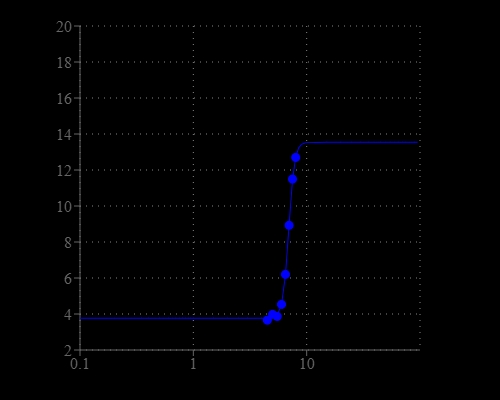Spexyte™ Intracellular pH Calibration Buffer Kit
Intracellular pH (pHi) plays an important modulating role in many cellular events, including cell volume regulation, cellular metabolism, calcium regulation, receptor-mediated signal transduction, ion transport, endocytosis, and other cellular processes. Intracellular pH is generally 6.8-7.4 in the cytosol and 4.5-6.0 in the acidic organelles. Intracellular pH changes have significant physiological effects, e.g., the pH-dependent concentration of intracellular messengers such as Ca2+ and cAMP affects cellular signaling. Several recent reports showed the dysregulated pH is emerging as a hallmark of cancer cells. Spexyte™ Intracellular pH Calibration Buffer Kit provides a range of pH calibration buffers (pH 4.5-8.0) with nigericin, which modulate the intracellular pH with the external pH in the presence of 100-150 mM K+. When used in conjunction with pH indicators, such as BCFL, AM or BCECF, AM, Spexyte™ Intracellular pH Calibration Buffer Kit can create a standard curve which is used to determine the intracellular pH.


| Catalog | Size | Price | Quantity |
|---|---|---|---|
| 21235 | 100 Tests | Price |
Storage, safety and handling
| H-phrase | H303, H313, H333 |
| Hazard symbol | XN |
| Intended use | Research Use Only (RUO) |
| R-phrase | R20, R21, R22 |
| UNSPSC | 12352200 |
Instrument settings
| Fluorescence microscope | |
| Excitation | Texas Red/FITC filter |
| Emission | Texas Red/FITC filter |
| Recommended plate | Black wall/clear bottom |
| Fluorescence microplate reader | |
| Excitation | 440, 500 nm |
| Emission | 530 nm |
| Cutoff | 515 nm |
| Recommended plate | Black wall/clear bottom |
Contact us
| Telephone | |
| Fax | |
| sales@aatbio.com | |
| International | See distributors |
| Bulk request | Inquire |
| Custom size | Inquire |
| Technical Support | Contact us |
| Request quotation | Request |
| Purchase order | Send to sales@aatbio.com |
| Shipping | Standard overnight for United States, inquire for international |
Page updated on January 20, 2026
